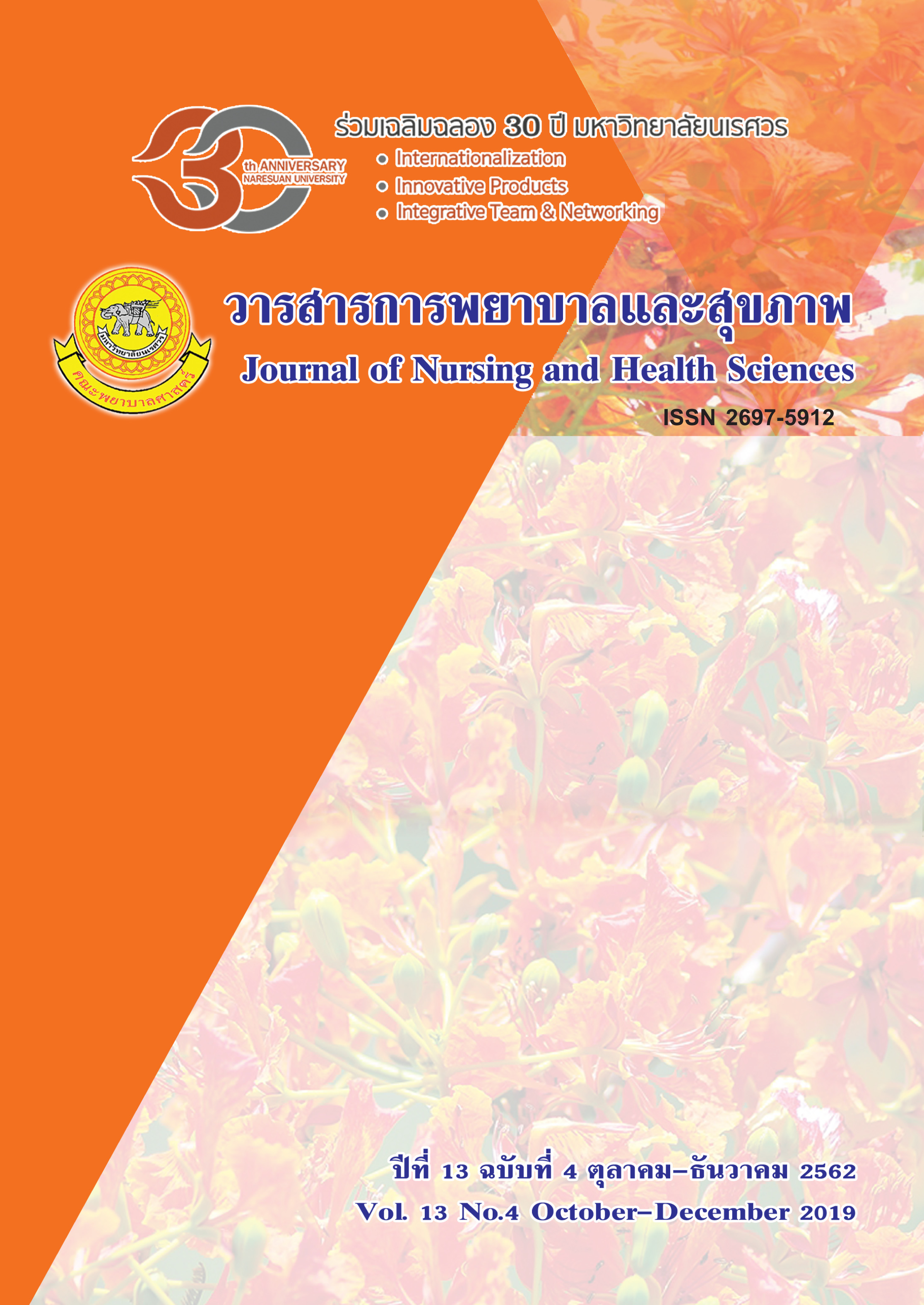Development of Oral Health Literacy Model for Elementary School Students in Health Region 5
Main Article Content
Abstract
According to the 8th national oral health survey of Thailand, the prevalence of dental caries and gingivitis in 12 years old school-aged group is 52.0% and 66.3%, respectively. The aim of this research and development was to develop an oral health literacy model in elementary school students in Health Region 5, Thailand. The study was divided into 3 phases. Phase 1 consisted of diagnosis of problems and identifying the needs of oral health literacy of elementary school students. Then, responses to questionnaires were collected from 400 students (grade 6) and interview questionnaires from school directors, teachers, dentists/dental hygienist and parents. Phase 2 consisted of implementation of the model in 40 students (grade 6). A model was developed consisting of 3 interventions, and 6-dimension questionnaires. Phase 3 consisted of evaluation of the model and interventions with questionnairesin 40 school students. The study was conducted from November 23, 2018 to April 30, 2019. The content validity of the instruments were 0.89 and the reliability of the questionnaire was 0.879. Statistical analysis was done using Paired t-test and content analysis. Results: There isinadequate equipment and teaching materials and students require proper dental care training using modern teaching materials and arrangement of activities. The model significantly increased the mean score of oral health literacy in all 6-dimensions ( = 2.50, S.D. = 0.11) and elementary school students reported that they had high ( = 3.54, S.D. = 0.14) satisfaction levels (at p-value .05). This model can be applied continuously in schools for improving oral health literacy in elementary school students.
Article Details
References
Bridges, S. M., Parthasarathy, D. S., Wong, H. M., You, C. K., Au, T. K., & McGrath, C. P. (2014). The relationship between caregiver functional oral health literacy and child oral health status. Patient Education and Counseling Journal, 94(3), 411–416.
Bureau of Health Promotion. (2013). Health promotion school assessment guide 2013. Department of Health, Ministry of Health, Bangkok: Kaew Chao Chom Media and Publishing Center. [In Thai].
Dental Public Health Division. (2014). The 7th national oral health survey of Thailand 2013. Bangkok: Veterans Affairs Publisher. [In Thai].
Dental Public Health Division. (2018). The 8th national oral health survey of Thailand 2017. Bangkok: Sam Charoen Panich (Bangkok) Company Limited. [In Thai].
Gambhir, R. S., Sohi, R. K., Nanda, T., Sawhney, G. S., & Setia, S. (2013). Impact of school based oral health education programmes in India: A systematic review. Journal Clinical Diagnosis Research, 7(12), 3107–3110.
Halawany, H. S., Al Badr, A., Al Sadhan, S., Al Balkhi, M., Al-Maflehi, N., Abraham, N. B., ...Al Sherif, G. (2018).
Effectiveness of oral health education intervention among female primary school children in Riyadh, Saudi Arabia. Saudi Dental Journal, 30(3), 190–196.
Hunnirun, P. (2002). Behavioral science in health education. Bangkok: Srinakharinwirot University. [In Thai].
Lekaviphat, S. (2012). Development of dental health model in elementary schools, Den Chai district, Phrae Province. Public health dentistry Journal, 17(2), 609–618. [In Thai].
Ministry of Public Health. (2017). Health Data Center 2017. Retrieved 1 August 2018 from https://hdcservice.moph.go.th/hdc/. [In Thai].
McLeroy, K. R., Bibeau, D., Steckler, A., & Glanz, K. (1988). An ecological perspective on health promotion programs. Health Education Quarterly, 15(4), 351–377.
Nurash, P., Intarakamhang, U., & Kasevayuth, K. (2019). The effect of learning management program to promote knowledge in oral health and patient-centered communication behaviors. Journal of Behavioral Science for Development, 11(1), 71-90. [In Thai].
Nutbeam, D. (2000). Health literacy as a public goal: a challenge for contemporary health education and communication strategies into the 21st century. Health Promotion International, 15(3), 259–267.
Pengchan, W. (2017). Thai Health Literacy 66. Bangkok: Department of Health, Ministry of Public Health, 10. [In Thai].
Research and Development Institute (2008). Learning documents for self-research (2nd ed.). Nonthaburi: Sukhothai Thammathirat Open University. [In Thai].
Roter, D. L. (2011). Oral Health literacy demand of health care communication: Challenges and solutions. Nurse Outlook, 59(2), 79–84.
Scannapieco, F. A. (2004). Periodontal inflammation: from gingivitis to systemic disease. Compendium Continuous Education Dental, 25(7), 16–25.
Senanurit, A., Phonpradapet, P., Duanraeam, U., Siwiset, S., Senanurit, S., & Nancho, S. (2014). Development of a dental health promotion model in elementary schools by participation of network partners of Tum Yai Subdistrict, Khu Mueang District Buriram Province 2011-2012 years. Journal of Public Health, 23(4), 609–618. [In Thai].
Suwan, P. (2019). Health literacy: the role of health educators. The 19th Health Education National Conference. Chonburi: Thian Watthana Printing Company Limited. [In Thai].
Wongsing, S. Jirasatit, S. Kainakha, P. Sirisopon, N. Naphatphitthayatorn, P. (2017). The effectiveness of health education program for health literacy development on dental health for prathomsuksa one student of Prachaleksombon School in Chachoengsao. Journal of Educational Studies, 32(1), 132-137. [In Thai].
World Health Organization. (2017). Shanghai declaration on promoting health in the 2030 agenda for sustainable development. Health Promotion International, 32(1), 7-8.


